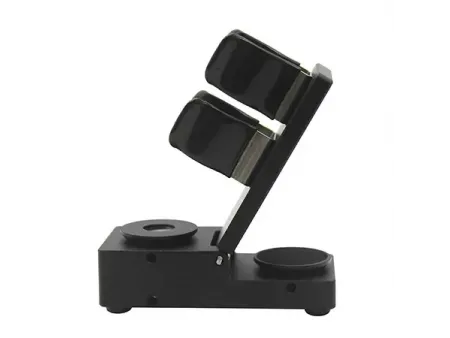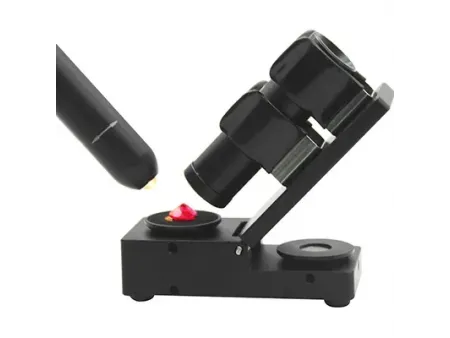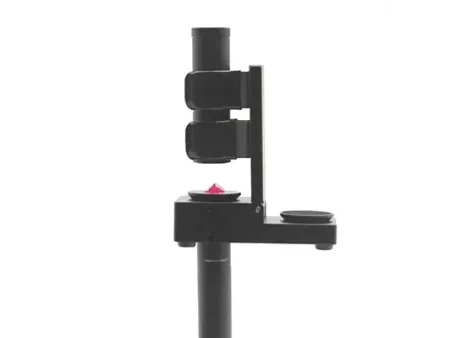Gem Spectroscope
Gem spectroscopes uses a dispersive element (either a prism or a diffraction grating) to separate white light into different wavelengths, creating a visible light spectrum. Various elements and compounds present in gemstones, such as transition metals, rare earth elements, and radioactive elements, selectively absorb specific wavelengths of light. By analyzing these absorption spectra, gemologists can identify gemstone types, determine their coloring agents, and study the composition of their color properties.
A light source and spectroscope can be mounted on the spectroscope stand, to make it easier to observe the absorption spectrum of gemstones.
- Methods of use: Suitable for both reflection and transmission methods.
- Material: Aluminum.
- Dimensions: 90 x 30 x 16 mm.
- Suitable for colored gemstones, as most colorless stones do not display distinct absorption spectra, with exceptions like zircon, diamond, and enstatite.
- Used for identifying gemstones with distinctive spectral patterns, including almandine, ruby, sapphire, jadeite, chrysoberyl, sinhalite, zircon, cobalt glass, and synthetic cobalt spinel.
- Gemstones with characteristic spectra can serve as diagnostic identification markers. For example, almandine exhibits an iron-aluminum absorption window, natural green jadeite has a 437nm absorption line, and certain gemstones display a series of distinct absorption bands in the red region.
A prism spectroscope produces a non-uniform wavelength spectrum
A diffraction grating spectroscope generates a uniform wavelength distribution.




